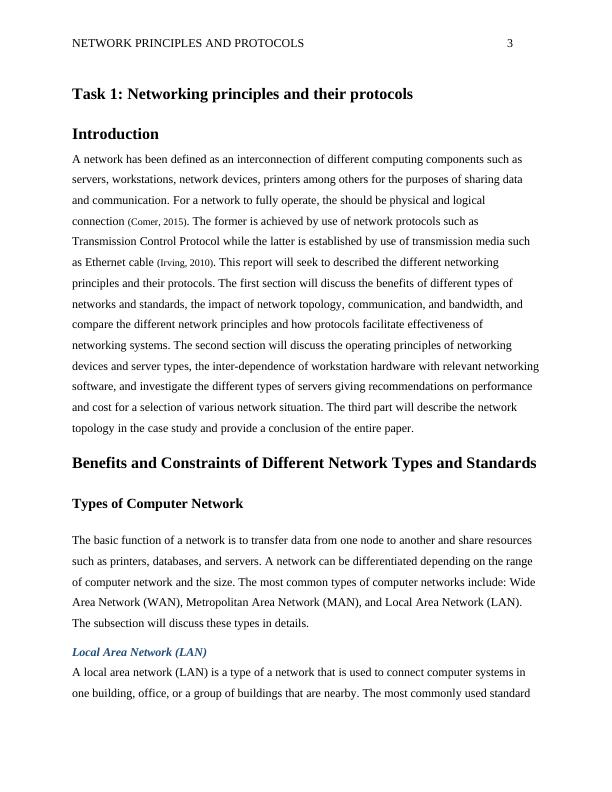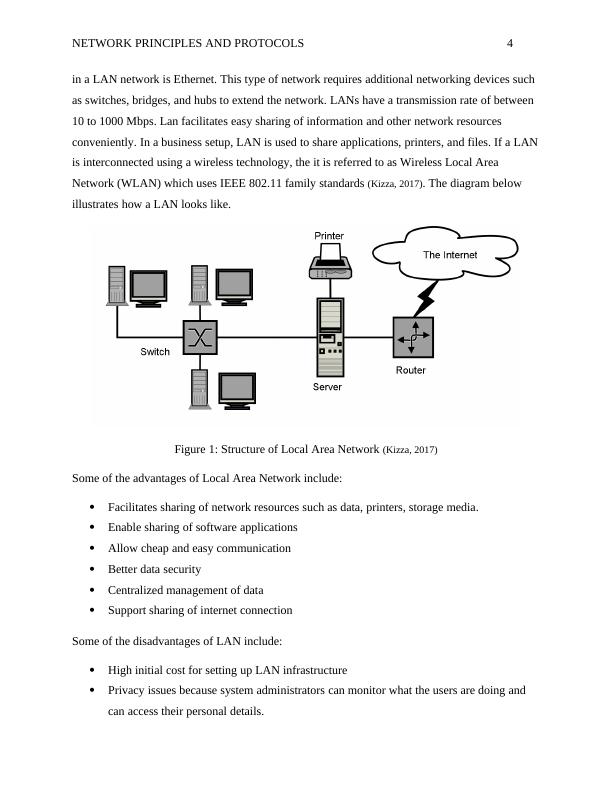Network Principles and Protocols
Investigate and write a report on networking principles and protocols for presentation at the next Board meeting.
13 Pages3704 Words69 Views
Added on 2022-11-30
About This Document
This document provides an overview of network principles and protocols. It discusses the benefits and constraints of different network types and standards, the impact of network topology, communication, and bandwidth requirements. It also explores how protocols enable the effectiveness of network systems and provides insights into networking devices and operations.
Network Principles and Protocols
Investigate and write a report on networking principles and protocols for presentation at the next Board meeting.
Added on 2022-11-30
ShareRelated Documents
End of preview
Want to access all the pages? Upload your documents or become a member.
Unit 2 : Networking Infrastructure - Assignment
|26
|8992
|888
Networking on Lucmat Ltd Assignment
|16
|4701
|253
(solved) Assignment on Networking
|27
|5649
|353
Benefit and Constraint of Different Network Types
|31
|5489
|58
Report on Implementing New Network Infrastructure
|20
|5055
|181
Assignment on Network Information Systems
|11
|2752
|12




